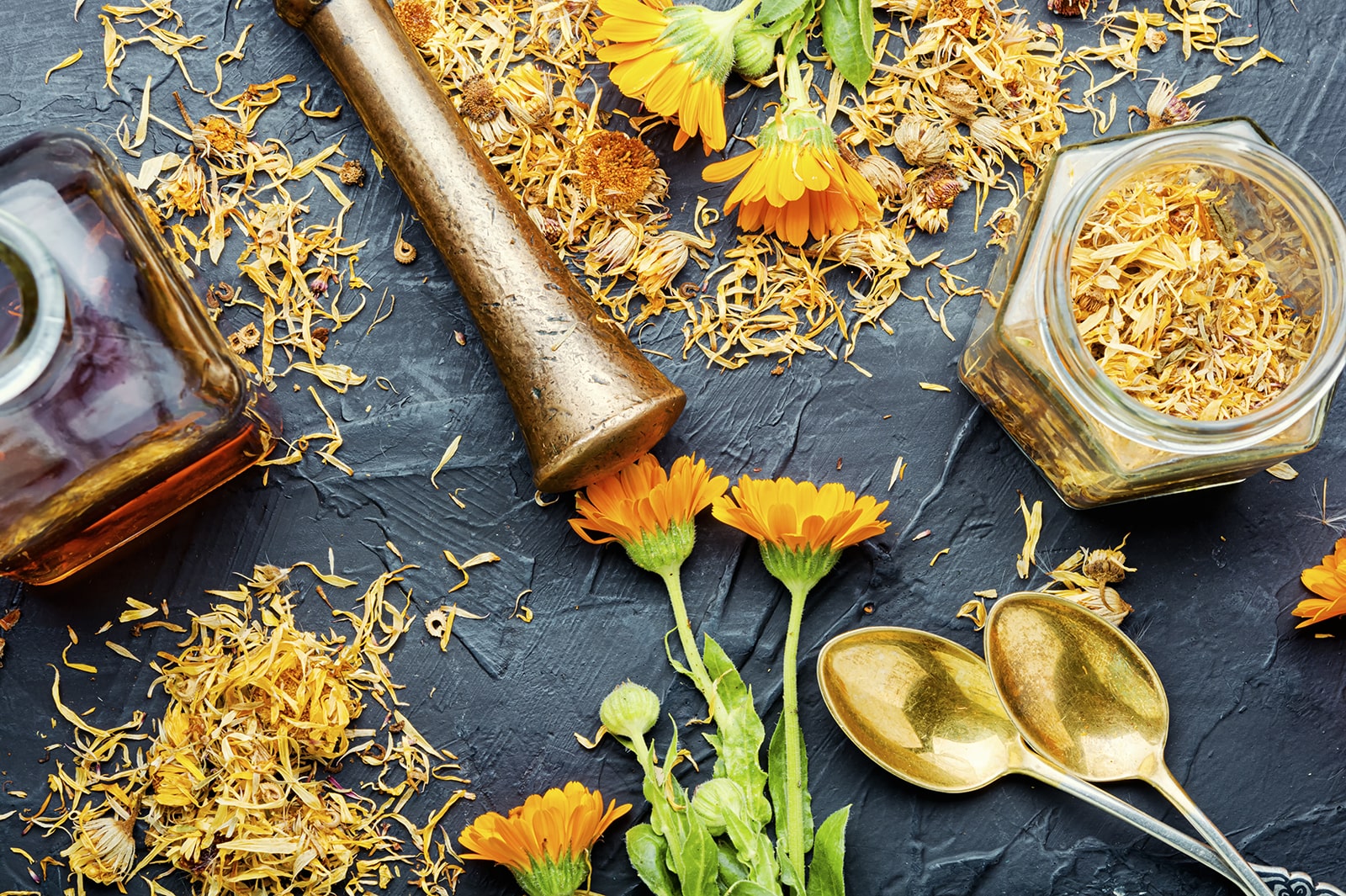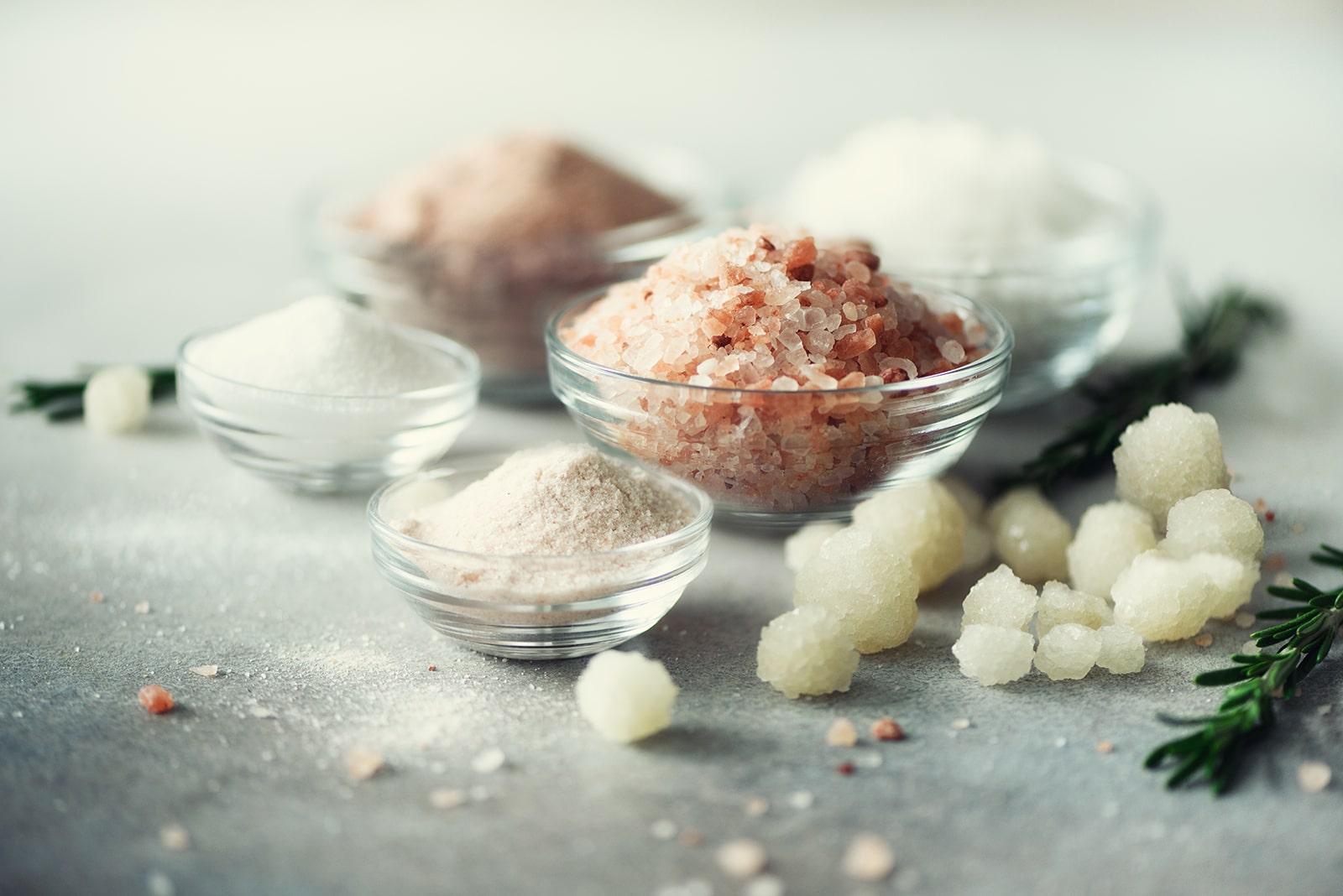Calendula (Marigold) and Oil Pulling
Calendula (Calendula offcinalis) AKA Marigold
You probably recognize the flower, since it’s quite popular and grows easily in many parts of the world. But what you might not realize is how powerful this plant is as a medicinal herb.
The phytochemical components of this plant contribute to the wide variety of action. They include trepenoids, flavenoids, carotenoids, and volatile oils, among others. These contribute to a wide variety of activity that makes calendula a perfect herb for healing certain infections, inflammation, cuts, bruises, sprains, and strains.
Uses for Calendula:
- Anti-fungal and anti-bacterial, especially useful for acne, periodontal bacteria, and against various forms of Candida overgrowth.
- Anti-viral activity, research has linked calendula to suppressing herpes simplex and influenza.
- Anti-inflammatory useful for topical inflammation and swelling, as well as a systemic inflammation with activity comparable to NSAIDs (medications like ibuprofen or naproxen).
- Immune-stimulation and anti-cancer activity. Studies have shown that phytochemical extracts from calendula are effective in boosting certain parts of immunity while inhibiting tumor growth.
- Antioxidant activity, especially useful for wound healing or improving skin healing and texture.
- Useful topically as a balm for inflammation due to sprains, strains or bruising.
Oil Pulling and Calendula
I decided to experiment by making my own oil extract of calendula (pictured above) with the intention of using the end product for oil pulling.
Oil pulling is an Ayurvedic technique shown to be effective for improving oral health and preventing gum disease and cavities. The antiseptic properties of calendula oil enhance the effectiveness of the practice.
How to Enhance Oil Pulling with Calendula:
- Use about 5-10ml (1-2 teaspoonfuls) of oil to swish in your mouth. Coconut oil is a great option for this, as is sesame oil or grape seed oil.
- Ideally you want to swish for 20 minutes. This might be challenging at first, so I recommending starting small with 5 (or even 3 minutes) and building up slowly.
- Do not swallow! You just spent 20 minutes extracting bacteria, toxins, plaque, and whatever else was living in your mouth, don’t swallow it and let it back in. Spit it out (might be a good idea to spit into the trash to avoid clogging your sink.
- Brush your teeth, preferably with natural toothpaste. Luckily there are some great options out there in health food stores or Whole Foods. You can also try making your own.
You can make an oil infusion with Calendula to boost the benefit of antiseptic properties of the herb. There’s various mathods for making the oil preparation, the simplest being a slow diffusion:
- Grind whole calendula flowers, either in a herb grinder or using a mortar and pestle.
- Using a high quality oil (sesame or olive oil would work well here), preferable cold pressed and unrefined, pour enough oil to cover the herb, then add more so that there’s about ¼ inch more oil than herb.
- Allow to sit in a glass container, protected from light for about 10 days. Shake occasionally. You may leave in the sun to help speed the infusion process.
- You can add a few drops of essential oil like tea tree or peppermint, or cinnamon oil for added benefits and flavor.
Alternatively, there’s some calendula infused oils available at most health food stores or online.
Resources
Muley, B., Khadabadi, S., & Banarase, N. (2009). Phytochemical Constituents and Pharmacological Activities of Calendula officinalis Linn (Asteraceae): A Review. Tropical Journal of Pharmaceutical Research Trop. J. Pharm Res.
Ehrlich, S. (2013, March 3). Calendula. Retrieved May 28, 2015, from http://umm.edu/health/medical/altmed/herb/calendula
Plants Profile for Calendula officinalis (pot marigold). (n.d.). Retrieved May 28, 2015, from http://plants.usda.gov/core/profile?symbol=caof
How to use Oil Pulling to Improve Oral Health. (2013, January 15). Retrieved May 28, 2015, from http://wellnessmama.com/7866/oil-pulling-for-oral-health/
Chicken Stock: Slow-Cooker Bone Broth Recipe
Slow-Cooker Chicken Broth Recipe
Chicken broth has been used for generations as a traditional cure-all remedy- known for building strength, energy and immunity. There’s a reason that grandma’s chicken soup seemed to be magic! Turns out the collagen and mineral content in traditionally made broth actually helps fortify bones, teeth and even helps heel the gut and boost our immune producing power.
As always, I recommend organic chicken for this recipe. And, whenever possible, use organic or locally sourced produce for the other ingredients.
Yields: 3 quarts
Prep time: 20 minutes
Cook time: 14 hours 30 minutes
Ingredients:
- 3 pounds bone-in chicken parts and gizzards
- 12 cups filtered water
- 1 tablespoon apple cider vinegar
- 1 yellow onion, peeled and quartered
- 3 large carrots, cut into large dice
- 4 cloves garlic, smashed
- 2 stalks celery with leaves
- 2 bay leaves
- 1 teaspoon sea salt
- 1/2 teaspoon cracked black pepper
- 1 bunch fresh parsley
Directions:
Place the water and chicken parts in a slow cooker and cook on high for 2 hours. Skim off any foam from the surface and remove the chicken. Shred the meat off the bones, and set the meat aside. Return the bones to the pot.
Reduce slow cooker to low. Add all the remaining ingredients, except the parsley, to the pot and cook on low for 12 hours or on high for 6 hours. Turn off the pot, skim the fat off the top, stir in the parsley, and cover for 30 minutes.
Strain the broth through a fine-mesh sieve or cheesecloth. Store in the refrigerator or freezer for later use. You may scoop off any solidified fat before using.
Source: Danielle Walker, AgainstAllGrain.com
Oil Pulling
Oil Pulling
Oil pulling, also known as “kavala” or “gundusha,” is an ancient Ayurvedic dental technique that involves swishing a tablespoon of oil in your mouth on an empty stomach for around 20 minutes. This action is believed to draw out toxins in your body, primarily to improve oral health, but also to improve your overall health.
It might be an ancient health practice, but oil pulling is getting the attention of modern science. Recent studies show that oil pulling helps heal gingivitis, control plaque, and reduce microorganisms that cause bad breath. In a recent WebMD article, Jessica T. Emery, DMD, explains, “Most microorganisms inhabiting the mouth consist of a single cell. Cells are covered with a lipid, or fatty, membrane, which is the cell’s skin. When these cells come into contact with oil, a fat, they naturally adhere to each other.”
Incorporating Oil Pulling into Your Dental Health Routine
- Oil pulling traditionally has used sesame oil, but sunflower and coconut oil are very good to use. Coconut oil in particular has the extra benefit of antimicrobial properties, and may also be more palatable for some people.
- Start with five minutes a day; build up to 20 minutes daily. Swishing with oil is an unusual sensation— from personal experience I can tell you, it will take some time to get used to it. Start with five minutes of daily swishing and increase by one or two minutes daily till you get to twenty.
- Use small amounts of oil. You don’t need a big mouthful for oil pulling to be beneficial. If you find you are swallowing oil (which you should not do), then spit it out and use a smaller amount.
- Continue routine dental care. Oil pulling should not replace routine dental hygiene. Continue to brush, floss, and use mouthwash daily.
Interested in making an antiseptic oil at home? Check out how I use Calendula flower to enhance the benefits of oil pulling.
Resources
Singh, A., and B. Purohit. Tooth Brushing, Oil Pulling, and Tissue Regeneration: A Review of Holistic Approaches to Oral Health. Journal of Ayurveda and Integrative Medicine 2, no. 2 (April 2011): 64–68. doi:10.4103/0975-9476.82525.
WebMD. Should You Try Oil Pulling? Reviewed June 4, 2014. http://www.webmd.com/oral-health/features/oil-pulling
Minerals
Minerals
Minerals are important nutrients in your diet that help the body maintain good health and resist infection—including the mouth and teeth. Minerals are inorganic elements that come from the earth, soil, and water and are absorbed by plants. Animals and humans absorb minerals from the plants they eat.
There are two kinds of minerals—macrominerals and trace minerals—that your body uses within its cells for many different jobs.
Macrominerals are required in larger amounts and are necessary for processes such as building bones, making hormones, contracting muscles, and regulating your heartbeat. They also play a role in brain function. Macrominerals include calcium, phosphorus, magnesium, sodium, potassium, chloride, and sulfur.
Trace minerals, including iron, manganese, copper, iodine, zinc, cobalt, fluoride, and selenium, are needed in much smaller quantities.
Consuming too much or too little of any mineral can have negative effects on health. For most people in good health, a safe range for consumption of minerals has been established (see Resources below). Personal variation comes into play depending on one’s lifestyle, genetics, environment, history of illness, and dietary restrictions.
Conventional wisdom dictates that the best way to get the minerals (and vitamins) your body needs is to eat a balanced diet that includes a wide variety of foods. However, recent research shows that while the vitamin content of food remains relatively stable over time, mineral content is becoming depleted. There are many reasons for this; erosion, farming practices, pollution, and even the way we cook can affect the nutrient density of both conventionally and organically harvested foods. As a result, along with my colleagues, I often recommend mineral supplementation even for someone eating the healthiest diet possible.
Resources
Bionutrient Food Association http://bionutrient.org
Human Performance Resource Center “Food Sources of Minerals.” http://hprc-online.org/nutrition/warfighter-nutrition-guide-chapter-9-1/Food%20Sources%20of%20Minerals.pdf
Recommended Intake and Functions of Minerals http://hprc-online.org/nutrition/warfighter-nutrition-guide-chapter-9-1/Food%20Sources%20of%20Minerals.pdf
Linus Pauling Institute at Oregon State University http://lpi.oregonstate.edu/mic/minerals
References
- Coulston, A., C. Boushey, and M.G. Ferruzzi, eds. Nutrition in the Prevention and Treatment of Disease. Oxford: Academic Press, 2013.
- Davis, D.R. “Declining Fruit and Vegetable Nutrient Composition: What Is the Evidence?” HortScience 44, no. 1 (February 2009): 15-19.
- Foundation for Alternative and Integrative Medicine. “Sustainable Agriculture and Nutrient Dense Foods.” Accessed March 2015. http://www.faim.org/agriculture/
- Kabata-Pendias, A. Trace Elements in Soils and Plants. Boca Raton: CRC Press, 2011.
- Marler, J.B., and J. Wallin. “Human Health, the Nutritional Quality of Harvested Food and Sustainable Farming Systems.” Nutrition Security Institute White Paper. Bellevue: WA, 2006. http://www.nutritionsecurity.org/PDF/NSI_White%20Paper_Web.pdf
- Thomas, D. “A Study on the Mineral Depletion of the Foods Available to Us as a Nation over the Period 1940 to 1991.” Nutrition and Health 17, no. 2 (April 2003): 85-115.




